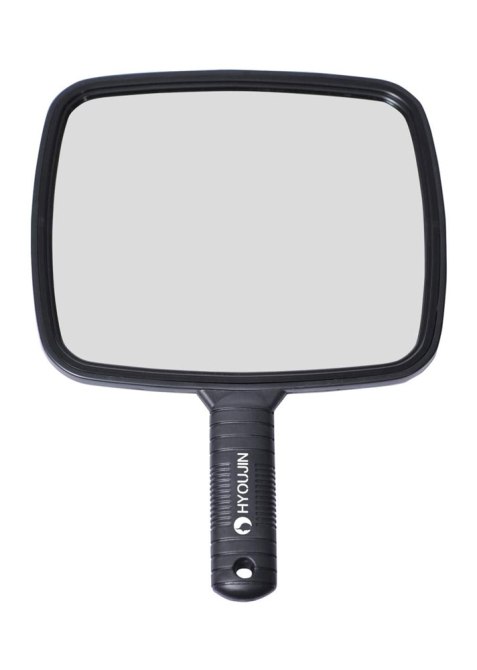In a past life, I thought to ask the barber which clipper settings she uses on my hair was simply good old fashioned small talk. As it turns out—wow, actually useful information to remember when you can’t get a shape up for weeks or worse, months. I’m not volunteering as tribute to do this right now, but knowing how to fade hair at home is a skill I may have to eventually use.
As it turns out, the process isn’t as scary as I thought. According to Oswald Wiggan, Master Barber with The Art of Shaving, there are a couple things to consider first. Most important is deciding whether you’re doing this on yourself, on someone else or vice versa. Of course, another person “can see the back of your head more easily and make sure your neckline is straight,” but don’t throw in the towel if you’re solo.
HYOUJIN.
Just make sure you have a large mirror with a handle so you can guide yourself. A neck guard is also helpful if you want to clean up the neckline and of course, a towel to keep your clothes from getting covered in hair.

Quality Time.
“Make sure you have plenty of light so you can see what you are doing,” adds Wiggan. “Shadows can blur the area you are trying to cut and make it harder to get a clean line.” And if you can, don’t give up on a messy style too easily. Play around and see if it can be finagled to look presentable with styling products because ultimately, haircuts are best left with the pros. But if it can’t wait…

JW Shears.
Clippers and shears are required to properly fade hair. For the most common short style, one that’s high and tight or faded on the sides, you’ll want to use clippers on the side and shears on top with a graduated approach. This is when that whole “knowing your barber’s clipper setting” comes in handy. If you don’t, schedule that conveniently timed catch-up over Zoom or text, like, right now.

Remington.
First, comb and separate the top from the sides so you have a clear idea of where the growth is. Imagine a line that divides the two and if needed, rest a comb there while trimming the sides to keep everything even. Also, avoid doing this on wet hair since it can elongate or shrink the actual length, which leads to mistakes.
Next, grab the clippers. Remember that this process requires finite detail, especially if you have hair like mine that grows in a million different directions. (With that being said, it may also be helpful to ask your barber for the exact patterns they cut, specifically, every spot they go with and against your natural hair grain so you don’t give yourself a bald spot. Yiiiikes.)
Generally speaking, you can trim against the grain on the sides and back of the head. “Start with a lower setting and work your way up in small increments. Where you start and end will depend on how close to your skin the lower portion of your hair cut is,” says Wiggan.
Go around the perimeter of your head a couple times so you don’t miss any spots and remove the neck guard after to clean up the neckline if you want. “You can do this with clippers or by shaving the area,” adds Wiggan.

The Art of Shaving.
If the top of your hair needs to be trimmed, use a comb or your fingers to section the hair and use shears to cut on the outside of the comb or your hand in a clean line. For those with textured hair, clippers are typically used on the top of the head, too. You can also do this at home, but remember to start with the lowest setting as you would on the sides and work your way up.
In a video for cleaning up the beard and neckline, Wiggan also says not to underestimate the power or simply snipping flyaways which can more quickly upgrade a grown-out look. Once you’re finished, use a brush to remove any loose hairs from the face and voila—you’re good as new.

The Art of Shaving.
Personally, I like washing my hair and working in a moisturizer immediately after, but it’s up to you. Ultimately, the most important tip to keep in mind is that fading your hair at home should be about low-key maintenance, not a dramatic transformation.
“Remember the goal is to clean yourself up. It’s not to recreate your look, but to maintain your look,” says Wiggans.
Our mission at STYLECASTER is to bring style to the people, and we only feature products we think you’ll love as much as we do. Please note that if you purchase something by clicking on a link within this story, we may receive a small commission of the sale and the retailer may receive certain auditable data for accounting purposes.

